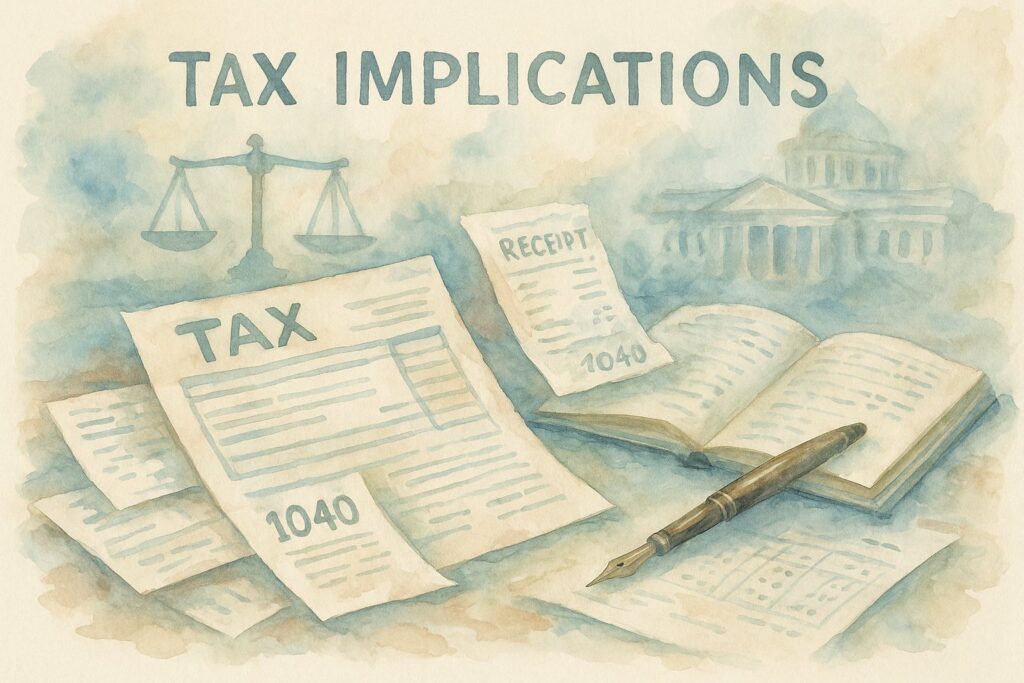
The 2025 Big Beautiful Bill introduces significant changes to healthcare policy that directly affect how you work and manage your income as a healthcare traveler or independent practitioner. You now face new rules on Medicare payments, expanded access to health savings accounts, and adjustments to Medicaid funding that could impact contract rates and job availability. Understanding these provisions early gives you a clear advantage in planning your next steps.
You operate in a fast-moving environment where policy shifts can alter assignments, reimbursements, and patient access overnight. This law reshapes payment structures, insurance coverage options, and compliance requirements, making it essential to adapt your contracts, budgeting, and travel choices accordingly.
By applying targeted strategies, you can protect your earnings, maintain flexibility, and position yourself for new opportunities created by the bill’s changes. Staying informed now ensures you can respond quickly when these provisions take effect.
Key Takeaways
- The law changes payment rules, insurance access, and Medicaid funding.
- Healthcare travelers and independents must adjust contracts and budgeting.
- Proactive planning creates opportunities despite policy shifts.
Overview of the 2025 Big Beautiful Bill Key Provisions

The 2025 Big Beautiful Bill (Public Law 119-21) reshapes U.S. tax, healthcare, and related policy areas with permanent extensions of prior tax cuts, targeted program reforms, and the removal of select incentives. It impacts how you manage income, deductions, and compliance, while also altering funding and operational rules for certain healthcare programs.
Legislative Background and Purpose
The bill was signed into law on July 4, 2025 after passing both chambers of Congress earlier that month. It was introduced as H.R. 1 and positioned as a broad fiscal and policy package rather than a single-issue measure.
Its legislative intent combines tax code permanence, program restructuring, and cost containment. Many provisions from the 2017 Tax Cuts and Jobs Act are now indefinite, removing prior sunset dates.
You also see a shift away from certain clean energy and industry-specific tax incentives. Lawmakers linked these changes to budget neutrality goals and long-term deficit management. The healthcare-related measures aim to streamline federal spending while adjusting Medicaid rules and reimbursement structures.
Core Policy Changes
Key tax provisions include:
| Area | Change | Effective Date |
|---|---|---|
| Individual Tax Rates | 2017 cuts made permanent | 2025 tax year |
| Standard Deduction | Maintained at higher post-2017 levels | 2025 tax year |
| Business Deductions | Expanded Section 179 expensing | 2025 tax year |
| Energy Incentives | Several credits repealed | 2026 tax year |
Healthcare-related measures modify Medicaid eligibility criteria, adjust federal matching rates, and impose new reporting requirements for certain provider types.
The bill also revises immigration-related work authorization processes, which can indirectly affect staffing in healthcare travel roles. These changes may alter how quickly you can onboard clinicians from abroad.
Affected Healthcare Sectors
Medicaid providers face the most immediate operational changes. If you work with state Medicaid programs, expect updates to reimbursement schedules and possible shifts in patient eligibility.
Independent practitioners may see indirect effects through tax changes—particularly if you operate as a pass-through entity or rely heavily on deductible business expenses.
Healthcare staffing agencies and traveling clinician networks will need to adjust to immigration and credentialing process changes. This may require longer lead times for contract placements and more rigorous compliance tracking for multi-state assignments.
Specialty care providers in rural or underserved areas could experience funding adjustments tied to revised federal-state cost sharing formulas. This may influence service availability and contract rates for traveling professionals.
Impact on Healthcare Travelers

You may face new administrative steps, altered pay structures, and stricter compliance checks under the 2025 One Big Beautiful Bill Act. These changes can affect how you secure assignments, maintain credentials, and manage your income while working across state lines.
Licensure and Credentialing Updates
The Act encourages states to adopt broader interstate license recognition for certain healthcare roles, but participation is not uniform. You should confirm whether your target states have joined relevant compacts or implemented reciprocal agreements.
Processing times for license verification may shorten in compact states but lengthen in non-participating states due to updated background check requirements. Some agencies now require proof of compact eligibility before offering contracts.
Key steps to take:
- Keep digital copies of all certifications and continuing education records.
- Track renewal dates closely, as some states have revised deadlines.
- Verify scope-of-practice rules before accepting multi-state assignments.
Compensation and Benefits Adjustments
The law’s cuts to federal healthcare programs may influence travel contract rates, especially in Medicaid-heavy regions. Facilities facing reduced reimbursement may offer lower base pay but offset with tax-free stipends for housing or meals.
Expanded access to Health Savings Accounts (HSAs) allows you to set aside pre-tax dollars for out-of-pocket expenses. However, employer contributions to benefits packages may shrink, requiring you to compare total compensation rather than hourly rates alone.
Consider reviewing:
| Component | Possible Change | Action Item |
|---|---|---|
| Base Pay | Downward pressure in some markets | Negotiate stipends and bonuses |
| Housing Allowance | More variable by region | Confirm market rates before signing |
| HSA Eligibility | Expanded access | Maximize contributions for tax savings |
Compliance Requirements for Mobile Professionals
Stricter reporting rules now apply to independent practitioners and travelers who work in multiple states. You may need to submit quarterly work location logs to agencies or licensing boards.
New federal documentation standards require more detailed patient care records, even for short-term contracts. Some facilities have added mandatory onboarding on these requirements, which can extend unpaid orientation time.
If you operate as an independent contractor, ensure you meet updated IRS guidelines for worker classification. Misclassification penalties have increased, and agencies are conducting more frequent audits of travel staff contracts.
Implications for Independent Practitioners
Several provisions in the 2025 Big Beautiful Bill alter how you manage your practice, receive payment, and comply with healthcare regulations. These changes affect both operational flexibility and the financial structure of your work.
Practice Autonomy Enhancements
You gain expanded authority to operate without certain prior federal approvals in defined service areas. This applies to telehealth expansion, where you can now treat patients across state lines if states have reciprocal agreements.
Scope-of-practice rules have loosened in some states due to federal incentives tied to Medicaid funding. This may allow you to perform more services without physician oversight, depending on your licensure.
To benefit, you should review state-level adoption of these provisions. Some states may require updated credentialing or proof of continuing education before granting expanded privileges.
Billing and Reimbursement Modifications
The bill phases in new Medicaid reimbursement formulas over several years. Rates for specific outpatient services are shifting from cost-based to value-based metrics, which may tie payment to patient outcomes and service efficiency.
You may see reduced reimbursement for certain low-complexity visits but potential bonuses for preventive care and chronic condition management. This can alter your service mix and scheduling priorities.
The legislation also standardizes some billing codes for telehealth, making cross-state claims submission simpler. However, you must ensure your electronic health record (EHR) system supports the updated coding structure to avoid claim denials.
Key adjustment areas:
- Review updated CPT and HCPCS codes.
- Track quality metrics for value-based payments.
- Monitor phased rate changes to forecast revenue.
Legal and Regulatory Considerations
The bill introduces stricter compliance requirements for Medicaid providers, especially regarding patient data security in telehealth. You must implement encryption standards that meet new federal benchmarks.
Some provisions restrict participation in Medicaid if you have certain types of contractual relationships with excluded entities, such as organizations that lose eligibility under the new rules. This includes Planned Parenthood’s exclusion from Medicaid reimbursement.
You should also prepare for more frequent audits, as the law allocates additional funding for oversight. Maintaining thorough documentation and internal compliance checks will reduce risk of penalties or repayment demands.
Actionable Strategies for Adapting to the Big Beautiful Bill

You face new compliance rules, expanded tax provisions, and shifting benefits structures under the 2025 Big Beautiful Bill. These changes affect how you manage contracts, structure compensation, and plan for healthcare-related expenses. Adopting targeted strategies now can help you stay compliant, optimize benefits, and reduce exposure to financial or operational risks.
Preparing Your Practice for Compliance
Review updated tax reporting requirements such as lower 1099 thresholds and expanded reporting for digital payment platforms. Ensure your accounting systems and payroll processes capture the necessary data accurately.
Update contracts with agencies or clients to reflect any changes in expense reimbursements, tax obligations, and benefits eligibility. This is especially important if you operate across multiple states with varying interpretations of federal provisions.
Create a compliance checklist that includes:
- HSA/FSA contribution limits and usage rules
- New employer-sponsored benefit requirements
- Documentation standards for deductions and credits
Train any administrative support you use—whether in-house or outsourced—on the new rules to avoid costly errors.
Leveraging New Opportunities
The bill expands HSA and FSA contribution limits and broadens eligible expenses. As a healthcare traveler or independent practitioner, you can increase pre-tax savings for medical costs, travel-related health needs, and certain preventive services.
If you operate as an S-corp or LLC, assess how the permanent lower income tax rates affect your take-home pay versus reinvestment in your business. You may find it beneficial to shift some income into retirement accounts or health-related savings vehicles.
Consider negotiating benefit stipends with contracting agencies instead of traditional benefits packages. This can give you more control over how you allocate funds toward insurance, savings, or supplemental coverage.
Risk Management Approaches
Evaluate how the bill’s repeal or modification of certain energy and transportation incentives could indirectly affect your travel costs, especially if you rely on vehicle deductions or per diem allowances.
Maintain a tax reserve fund to cover potential underpayments, especially during the first year of implementation when guidance may still evolve. This helps you avoid penalties if interpretations change.
Work with a tax professional familiar with both healthcare contracting and the new law. They can help you identify overlooked deductions, ensure accurate quarterly estimates, and adjust your strategy if future IRS guidance alters compliance requirements.
Future Outlook and Continuing Developments
You can expect changes in compliance requirements, reimbursement models, and health benefit structures as agencies respond to the 2025 law. Certain provisions will phase in gradually, creating both opportunities and operational challenges for mobile healthcare providers and independent practitioners.
Expected Regulatory Updates
Federal agencies will issue additional rules to implement the healthcare-related provisions of the One Big Beautiful Bill. These may include updated Medicaid eligibility criteria, new reporting formats for travel nurse agencies, and modified tax treatment for healthcare stipends.
You should prepare for CMS guidance on billing codes tied to temporary assignments. This may affect how you submit claims for multi-state work.
Key anticipated areas:
- Licensure reciprocity adjustments for interstate practice
- Revised telehealth coverage standards for cross-border care
- Benefit plan documentation requirements for 1099 healthcare workers
State-level boards may align their regulations with federal changes, but timelines will vary. Monitoring both federal and state bulletins will help you avoid compliance gaps.
Long-Term Effects on Healthcare Delivery
The bill’s permanent tax changes and Medicaid reforms could shift where and how you work. Expanded deductions for business expenses may make extended travel assignments more financially viable.
However, reductions in certain public health program funding could increase demand in underserved areas, influencing assignment availability.
You may see more short-term contracts in rural or high-need regions as facilities adjust budgets. Telehealth utilization is likely to grow, especially for follow-up care, which may change your patient interaction patterns.
Over time, reimbursement rates and contract structures may stabilize under the new framework, but early volatility is possible. Planning flexible schedules and diversifying your client base will help you adapt to these evolving conditions.
Frequently Asked Questions
The 2025 Big Beautiful Bill changes how you are paid, licensed, and taxed while also influencing where you can work and how you maintain your credentials. It introduces permanent telehealth flexibilities, modifies certain tax deductions, and updates professional requirements that may affect your daily operations.
How does the 2025 Big Beautiful Bill impact reimbursement rates for healthcare travelers?
You may see adjustments in reimbursement structures due to expanded access to telehealth services under high-deductible health plans (HDHPs). This can shift demand toward virtual care assignments, which may pay differently than in-person roles. Some agencies may revise per diem allowances to align with updated IRS guidance tied to the bill’s tax changes.
What are the new licensing requirements for independent practitioners under the 2025 Big Beautiful Bill?
The bill encourages interstate practice by supporting streamlined licensing compacts in certain professions. If you work across state lines, you may qualify for faster credential recognition. However, you must still meet each state’s continuing education and background check requirements before providing patient care.
What strategies can healthcare travelers employ to navigate the changes brought by the 2025 Big Beautiful Bill?
You can diversify your assignment types by including both telehealth and on-site work to adapt to evolving reimbursement trends. Reviewing agency contracts for updated tax treatment of stipends and allowances is essential. Staying informed on licensing compact participation will help you secure assignments in multiple states more efficiently.
What are the primary tax implications for independent practitioners as a result of the 2025 Big Beautiful Bill?
The law makes several provisions from the 2017 Tax Cuts and Jobs Act permanent, including certain pass-through deductions. You may also access new deductions for professional expenses and continuing education. Tracking all business-related travel and housing costs remains important for maximizing allowable write-offs under the updated tax rules.
How does the bill affect the availability of travel assignments in rural and underserved areas?
Expanded telehealth coverage may increase demand for remote providers serving rural patients. At the same time, some in-person assignments may decrease if facilities shift more care to virtual platforms. Incentive programs for underserved areas remain in place, but payment models may change to reflect the bill’s reimbursement updates.
What are the continuing education and certification requirements for healthcare professionals under the new bill?
The bill supports standardized continuing education requirements across participating states in licensing compacts. You may find it easier to apply completed CE hours toward multiple state renewals. Certain specialties may require additional training in telehealth delivery to meet updated care standards tied to expanded remote service provisions.

https://shorturl.fm/6C9Bd
https://shorturl.fm/6WwjZ
https://shorturl.fm/1Og6q
https://shorturl.fm/A2u6z
https://shorturl.fm/pi3TS
https://shorturl.fm/nbDB0
https://shorturl.fm/cgdrj
https://shorturl.fm/Hzz3c
https://shorturl.fm/qRL5o
https://shorturl.fm/XRIw5
https://shorturl.fm/7hxVy
https://shorturl.fm/zbbOE
https://shorturl.fm/au85r
https://shorturl.fm/lU3V7
https://shorturl.fm/wi6sb
https://shorturl.fm/O1GVz
https://shorturl.fm/XMnlN
https://shorturl.fm/Zcmh1
https://shorturl.fm/eQ4nU
https://shorturl.fm/Tiu7Q
https://shorturl.fm/o0zGc